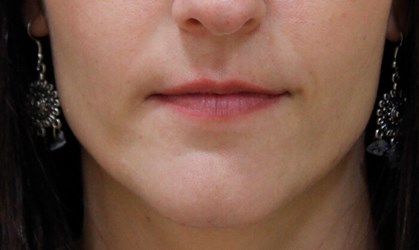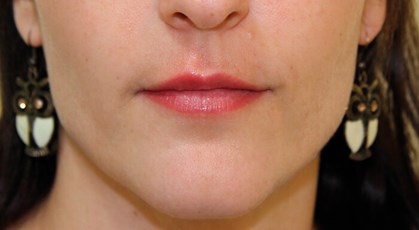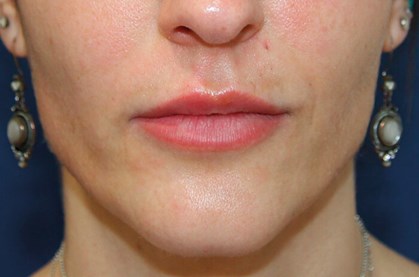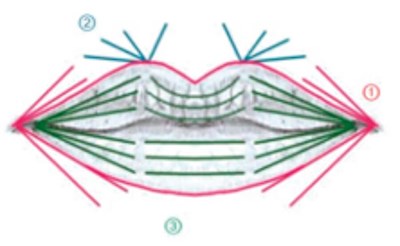Volumetric changes in treating thin lips remain a challenge for all aesthetic medical practitioners. Obtaining an optimum result requires a good knowledge of facial anatomy, an excellent injection technique and adequate and careful patient selection. With inappropriate patient choice, even with the correct injection technique, the result can be unsightly.
It is important to consider the age of the patient along with the personal aesthetic proportions. Special attention must be paid to the lower third of the face and, in particular, the nasolabial angle. If it is less than 85 degrees and the distance from the sub-nasal point to the upper lip is shortened, lip augmentation is not recommended due to a high risk of an unaesthetic result. Patients with a shortened lower third of the face and with a reduced chin size, will have unattractive results.
The success of the procedure is influenced by our patient’s age and skin condition. Older patients and those with the highest degree of flaccidity are more prone to get a negative result e.g. ‘duck-bill’.

Figure 1: Before treatment (16 September 2016).

Figure 2: After one session (25 November 2016).

Figure 3: After four sessions (24 May 2019).
Treatment summary
In such cases, I recommend a series of treatments aimed at restoring facial harmony such as opening the nasolabial angle and / or chin profile. In the case of flaccidity, a personalised and appropriate treatment must be done before any lip augmentation. I always ask patients to stop taking any drugs that act as an anticoagulant. If the herpes virus or any dental or other infection is detected, the treatment is cancelled until complete resolution.
The treatment is carried out using a topical anaesthetic cream.
When hyaluronic acid (HA) is used in lips, it must have a low concentration of HA, low elasticity and medium cohesiveness to have high integration and greater gel spread in the superficial layers of the dry mucosa and the middle dermis of the peribuccal area. The gel must also be soft and homogenous to inject, which improves our handling while increasing the patient’s comfort.
In the case presented we used Hyabell® Basic (16mg/ml) for volume and Hyabell® Lips (12mg/ml) for lips contour (Adoderm GmbH, Germany). In this case a total of 1.5ml was injected in the first session. You should never use more than 2ml and a retrograde linear injection and / or fan technique with a 30G needle is recommended.
The steps are explained in following line drawing:

- Retrograde linear injections of the lip contour to define it (red).
- Determine the columns and the philtrum and cupid arch with the retrograde linear technique or / and fan (blue).
- Superficial injections into the dry mucosa with the same technique as before (green).
The importance of an adequate superficial level in the lips and buccal and perennial areas helps to minimise possible complications and the migration of hyaluronic acid in unwanted areas.
After injection a gentle massage is done for five to ten minutes to create the desired shape.
The patient is reviewed after three to four weeks. Lips should look natural and dynamic, creating facial harmony and reflecting youth. At that appointment a five-minute lips massage is performed. I teach the patient how to do this at home and advise them to perform this massage every day for a month. This will help to improve better integration and prevent possible fibrosis formation in the treated area.
To continue increasing volume, I recommend one session per year with at least six months between each and no more than 1ml of HA filler.
COMMENTS ARE WELCOME





